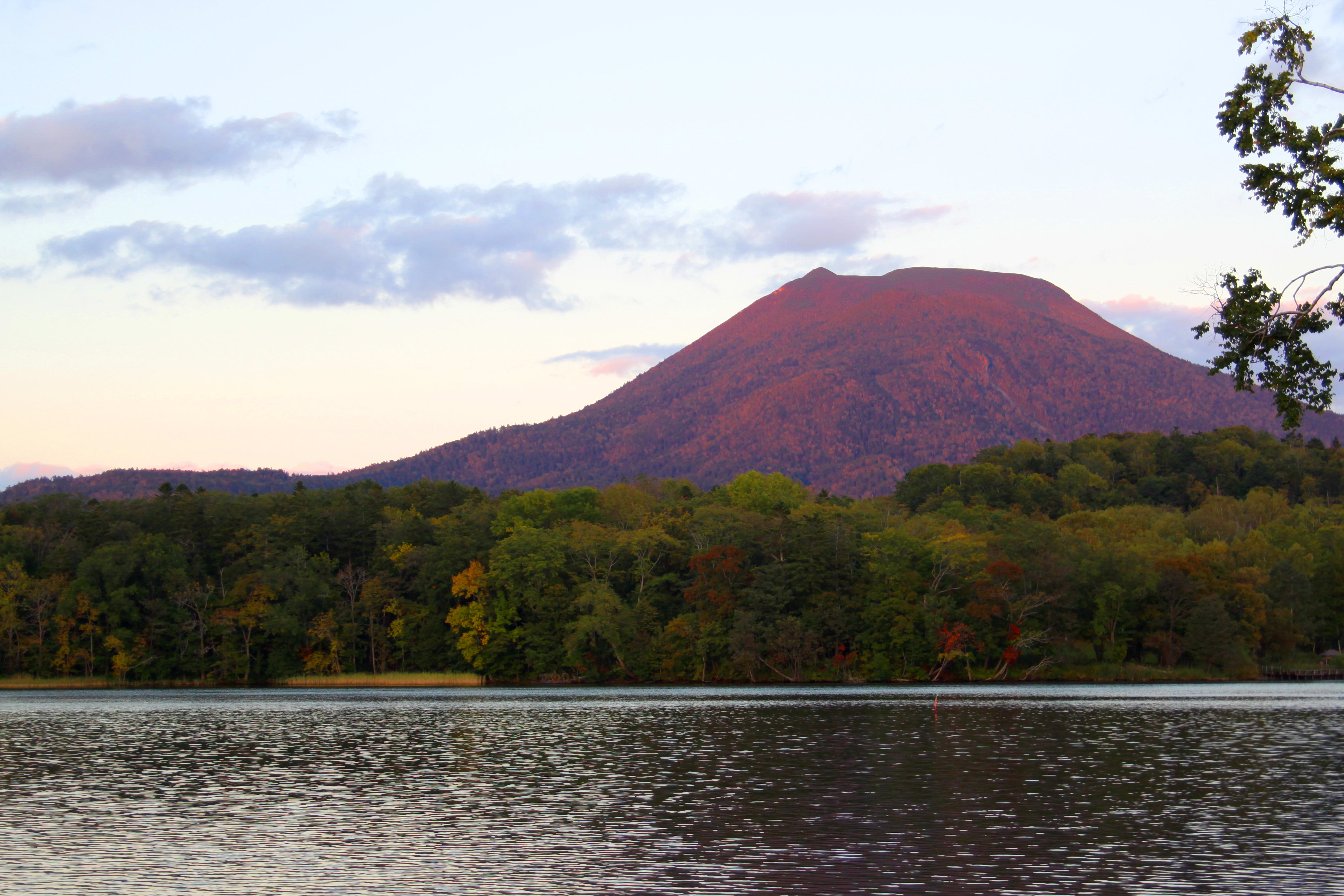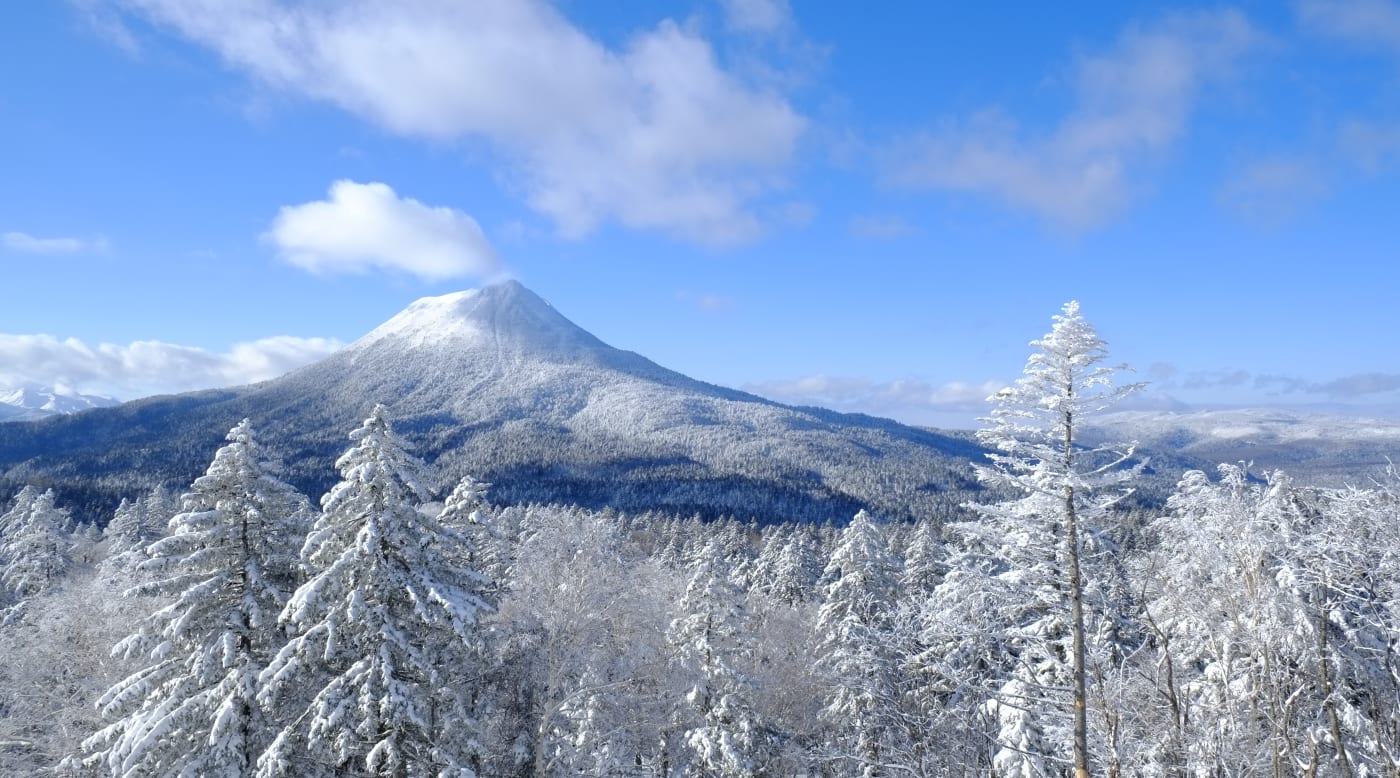The Akan Area
Lake Akan is within Akan Caldera, which was formed by the collapse of land after volcanic eruptions thousands of years ago. It is famous for marimo—bright green spheres of algae. Board a tour boat for a trip across the lake to Churui Island to see marimo or bathe in hot springs at Japanese inns along the shore. You may also want to make the challenging 1,370-meter climb to the peak of nearby Mount Oakan.
Akanko Onsen is a small township located on Lake Akan’s southern shore, lined with onsen hotels and Japanese inns, making it the perfect jump-off point for sightseeing and activities in the area. Follow the lakeside walking path near the Akankohan Eco-museum Center, for example, to see bubbling mud pools called "bokke" and learn about Akan-Mashu National Park’s unusual flora and fauna. In winter, enjoy skating on the lake and skiing at Akankohan National Ski Area, just a short distance from town.
Ainu Kotan, a village within the township, is Hokkaido’s largest Ainu settlement. Sample traditional Ainu fare here such as venison, and wild mountain vegetables mixed with beans, and shop for elaborately carved woodwork and tools. The village’s Akanko Ainu Theater presents traditional Ainu dance performances that UNESCO lists an Intangible Cultural Heritage.
Mount Meakan is an active volcano and hiker’s paradise rising southwest of Lake Akan. There are three trails to the top, including one from Lake Onneto, a lake on the park’s southwestern edge whose waters range from emerald green to cobalt blue depending on the time and season. From the peak of Meakan, you’ll be able to survey the volatile crater and the volcanic gases spewing from it.
The Mashu Area
Japan's largest caldera lake, Lake Kussharo, is the focal point of the park’s Mashu side. Canoeing is popular here in summer, and tours are available. Volcanic activity keeps the lake waters warm in winter, and graceful whooper swans and other birds migrate here from Siberia.
The campground at the base of Wakoto Peninsula, which juts out into Lake Kussharo, is a good place to pick up the 2.5-kilometer nature trail that crosses a sandbar and circles the peninsula. As you walk between towering trees and steaming volcanic vents, you may hear and even spot rare black woodpeckers.
A massive volcanic eruption approximately 7,000 years ago shaped Mashu Caldera, which contains Lake Mashu, one of the world’s clearest lakes. There are three observatories around the steep rim of the caldera, all with good views of the lake. Lake Mashu is known for the thick and ethereal fog that frequently settles on its surface, a phenomenon known as "unkai," meaning "sea of clouds." You’ll get great views of this from the observatories, especially in the early morning between June and October.
To the southeast of Mashu Caldera is Mount Nishibetsu. Between June and August, the fun-but-challenging hike up the mountain takes you through spectacular fields of colorful alpine flowers. On the north side is Kaminokoike Pond, blue as a sapphire, beautifully clear and set in a needleleaf and broadleaf forest.
Mount Io, called Atosa-Nupuri in the Ainu language, is the Mashu area’s most active volcano, constantly spouting tall clouds of steam. Cracks in the barren mountain’s surface emit steam, and electric-yellow sulfur crystal deposits create an otherworldly scene.
Running from the Kawayu Eco-museum Center to the Mount Io Rest House, Tsutsujigahara Nature Trail is your introduction to the harsh volcanic environment around Mount Io. Plant life such as Japanese stone pines—usually only found at much higher altitudes—covers the area. Between late June and late July, Labrador tea plants that grow out of the ashen soil bloom in swathes of white.
Culture
Numerous communities of Ainu, an indigenous people of northern Japan, are found around Hokkaido. The 30-household-strong Ainu Village (Ainu Kotan) on the west side of Akanko Onsen is Hokkaido’s largest Ainu community.
The Ainu people venerate the bear as the avatar of a powerful mountain god and perform a ritual, Iomante, in honor of the bear deity. The Iomante Fire Festival features traditional dances, music and rituals, such as the fire-lighting ceremony that Ainu elders perform.
The Iomante Fire Festival is performed at Akanko Ainu Theater from mid-March until the end of November. You can learn more about Ainu history at the Kussharo Kotan Ainu Folklore Museum next to Lake Kussharo, and find out why the Ainu believe that all things, natural phenomena and inanimate objects included, are sacred.

